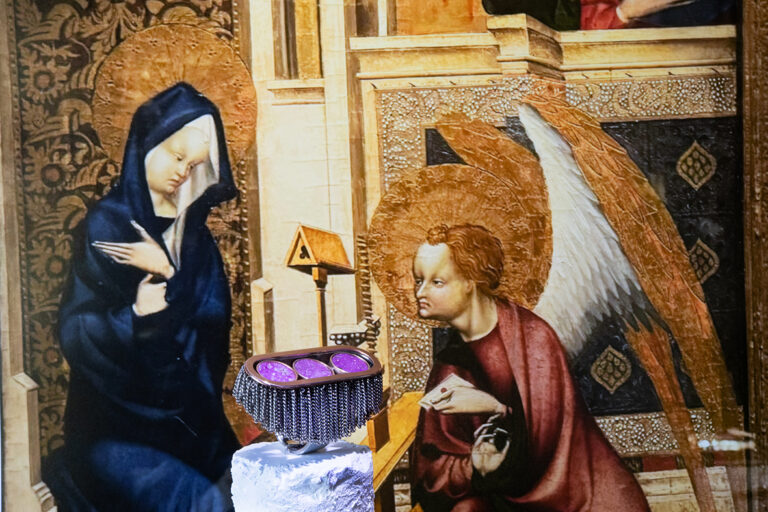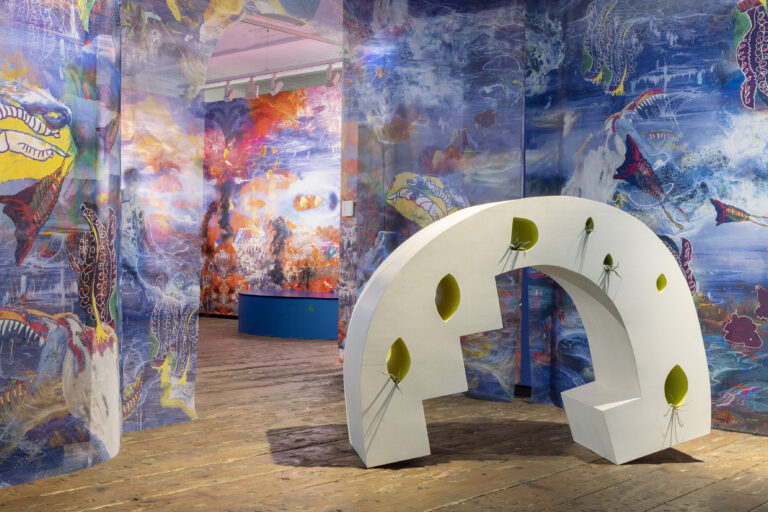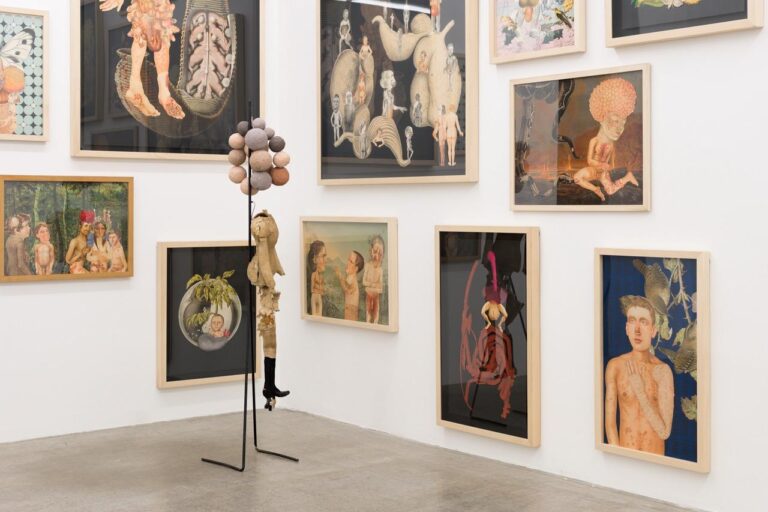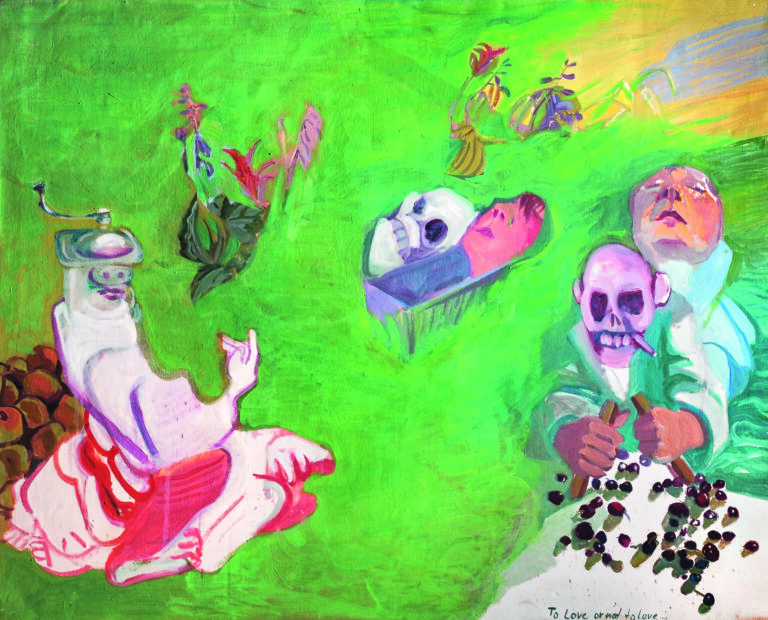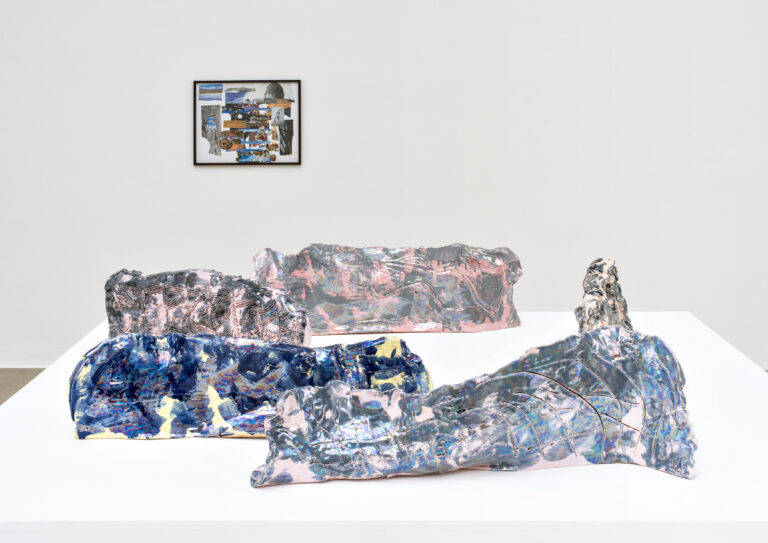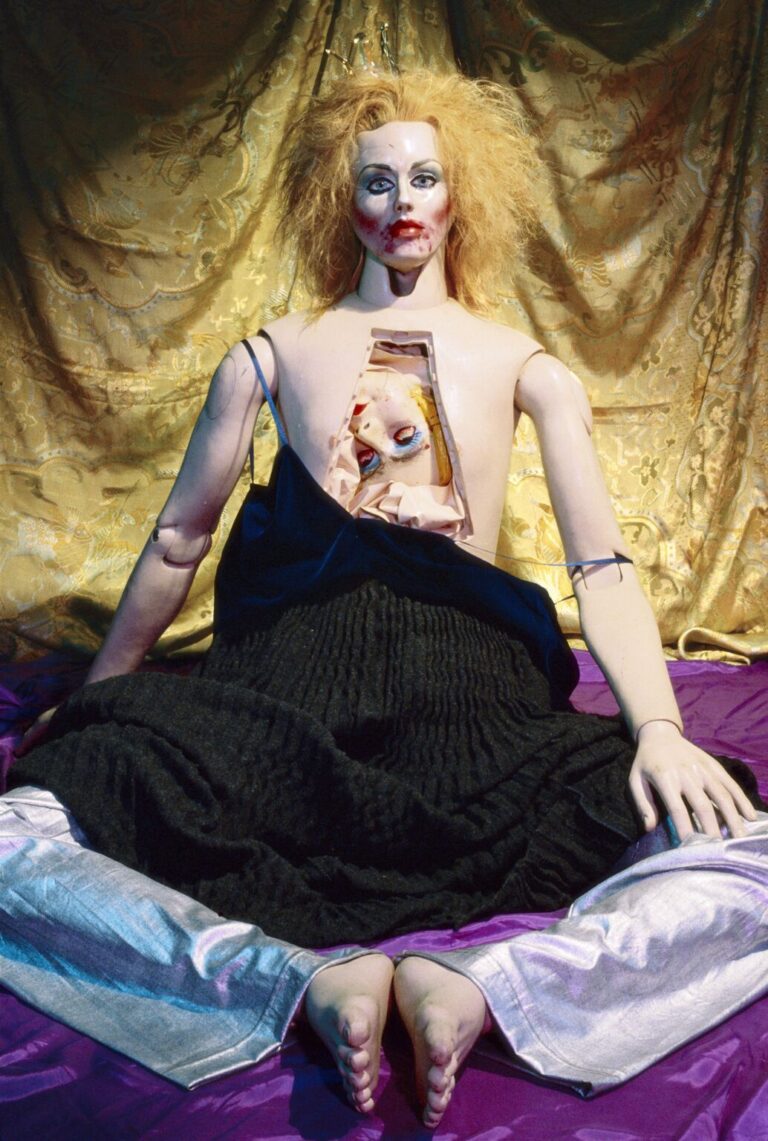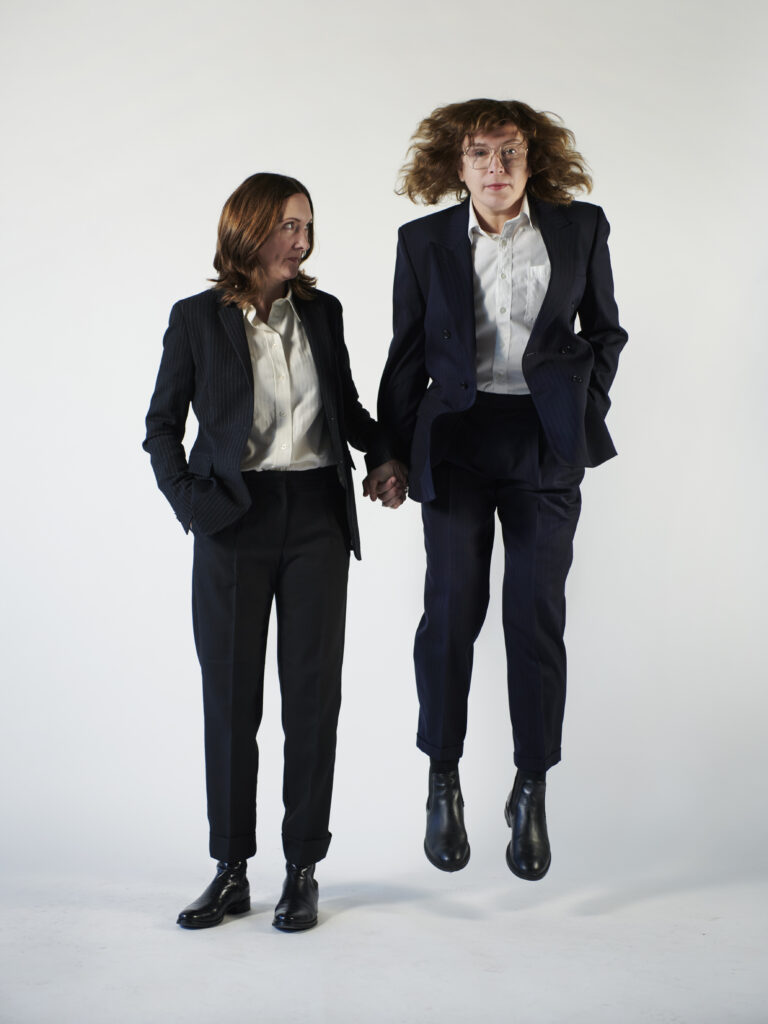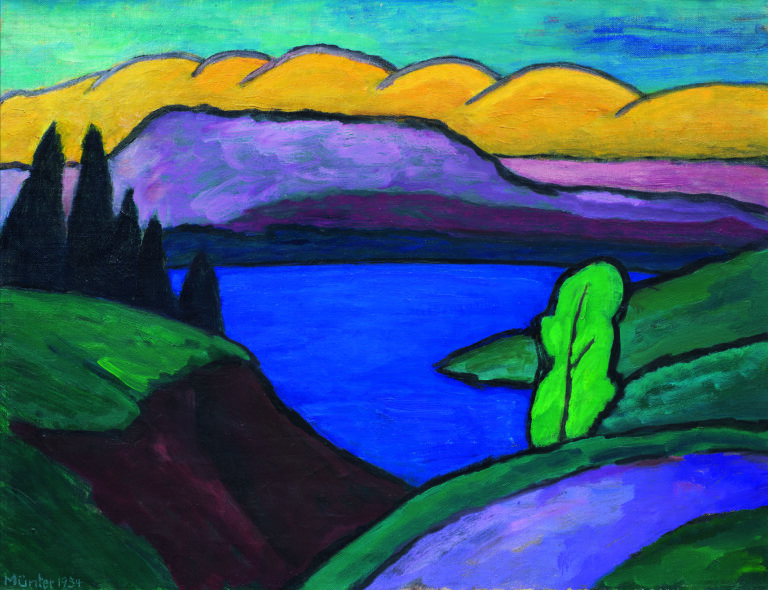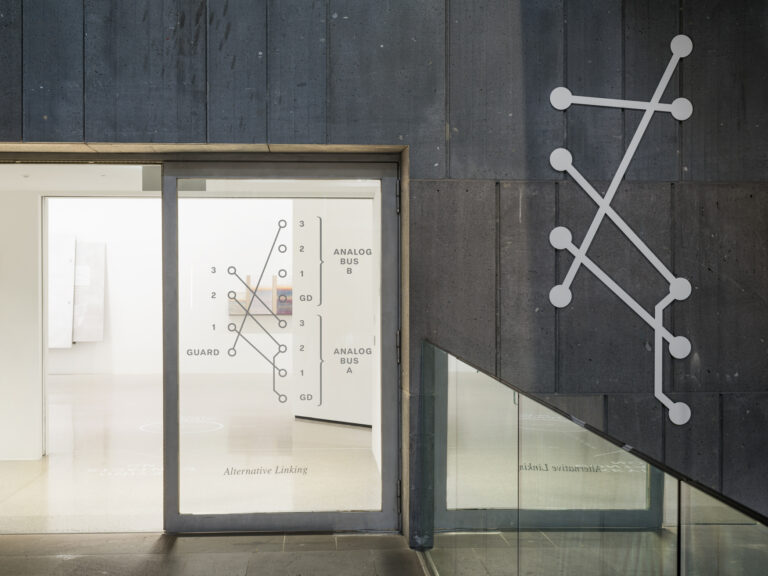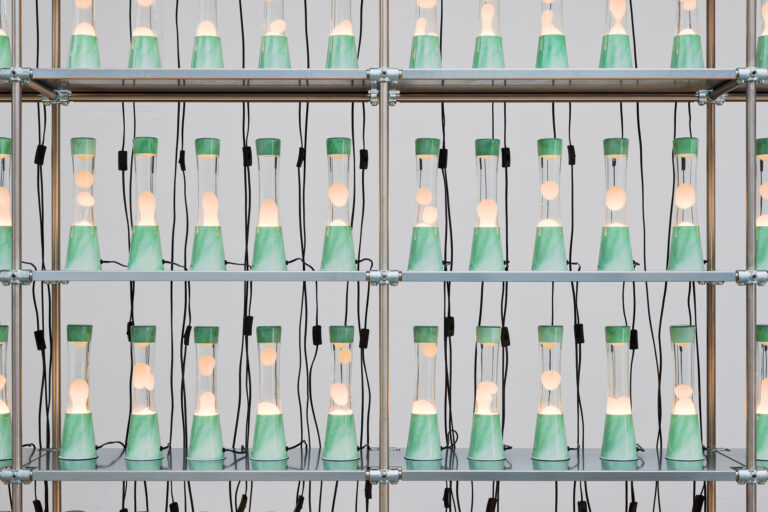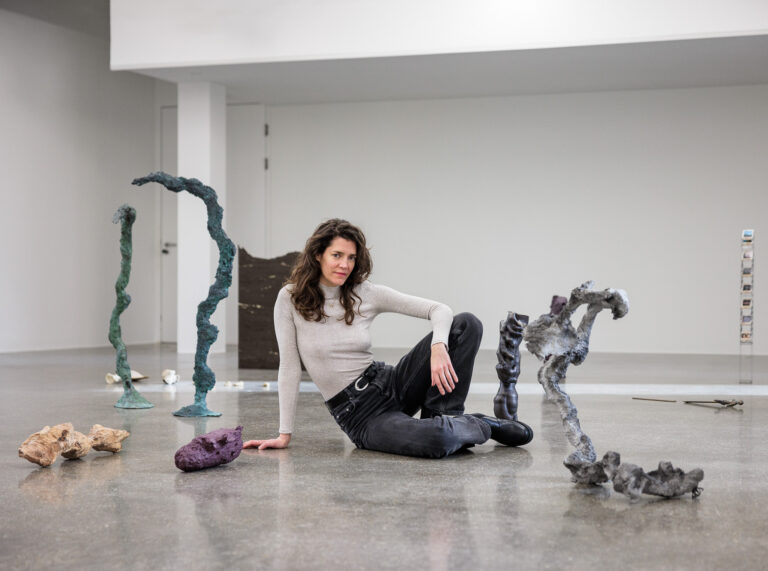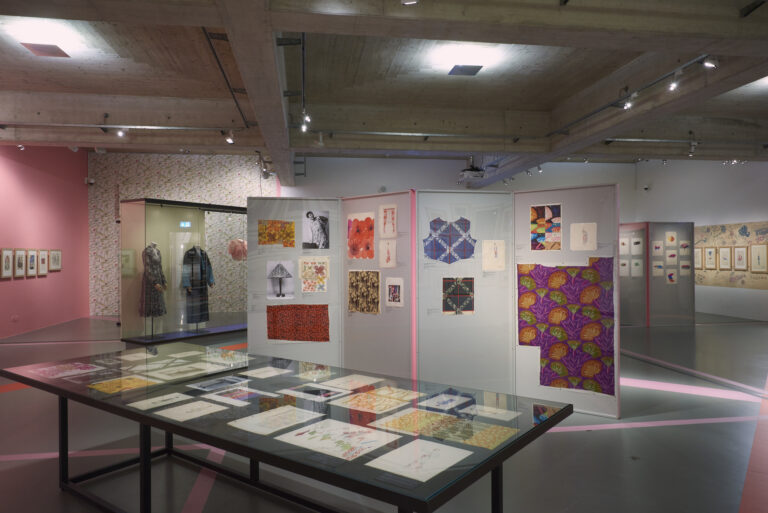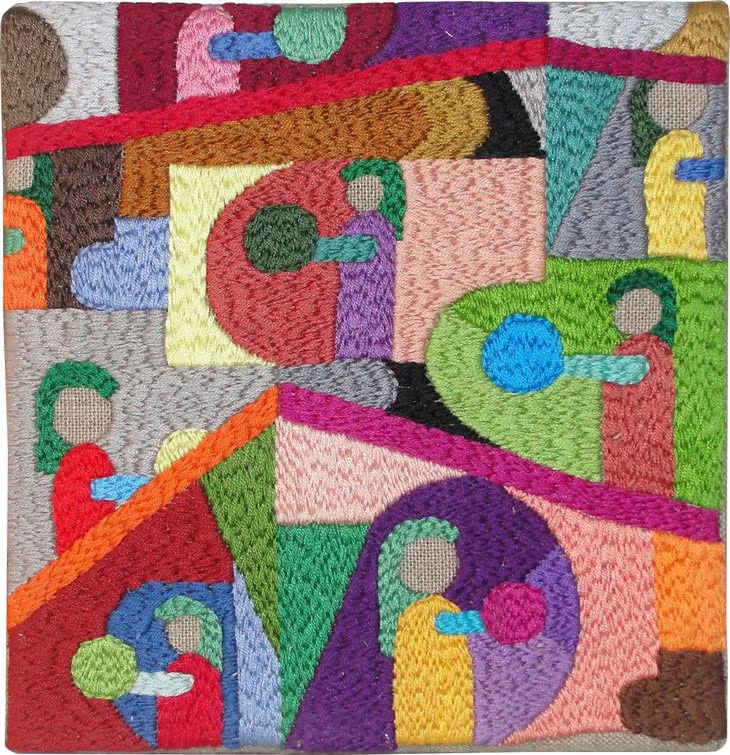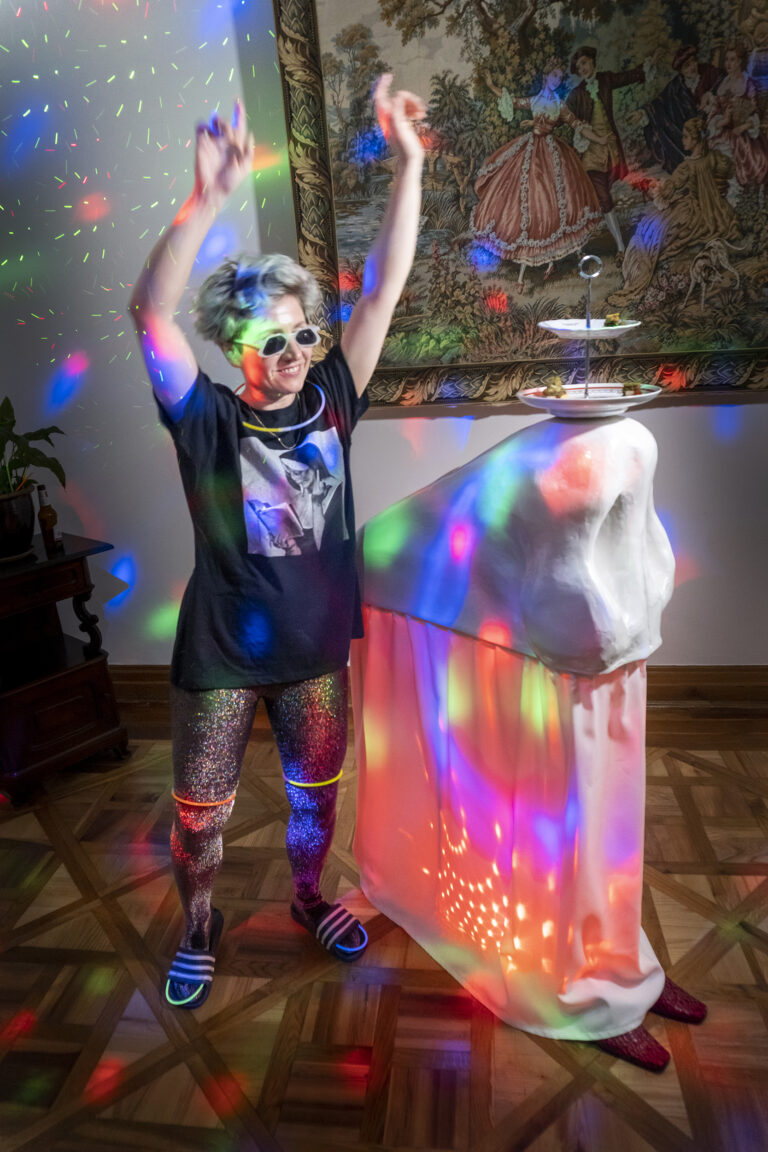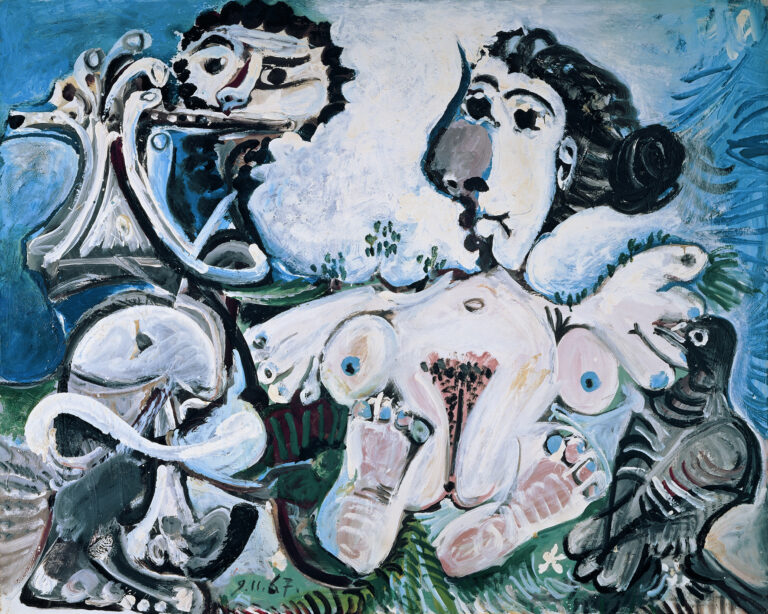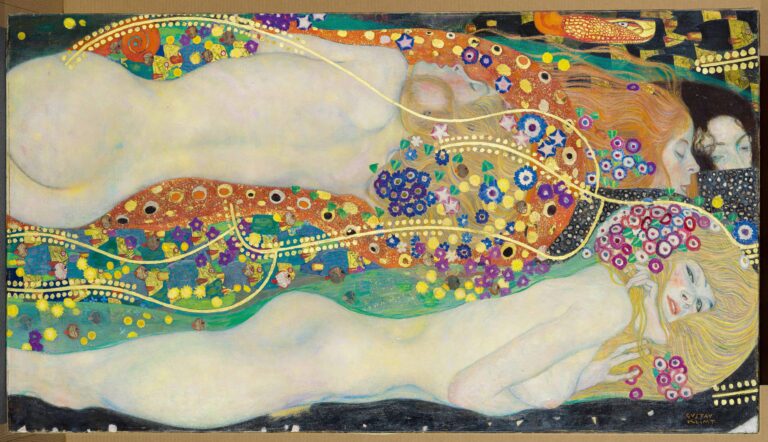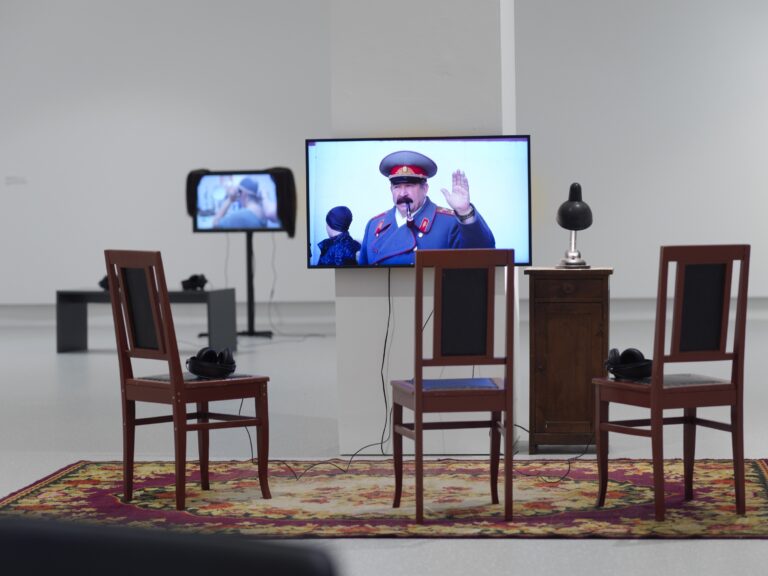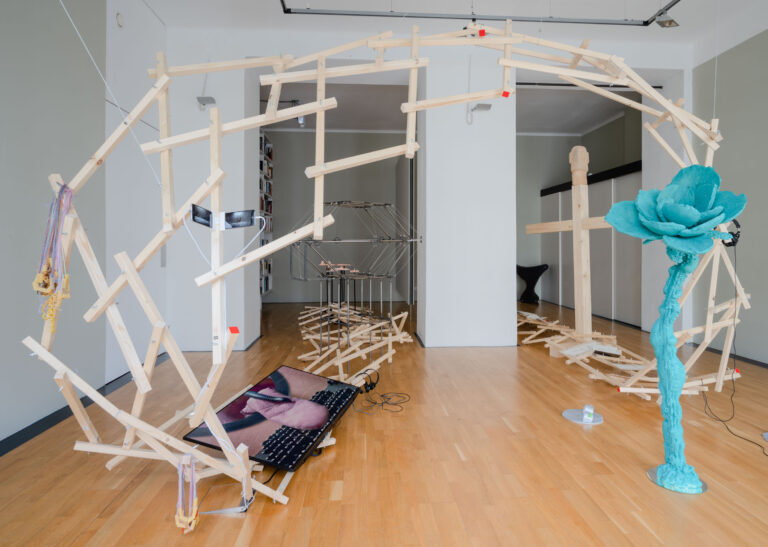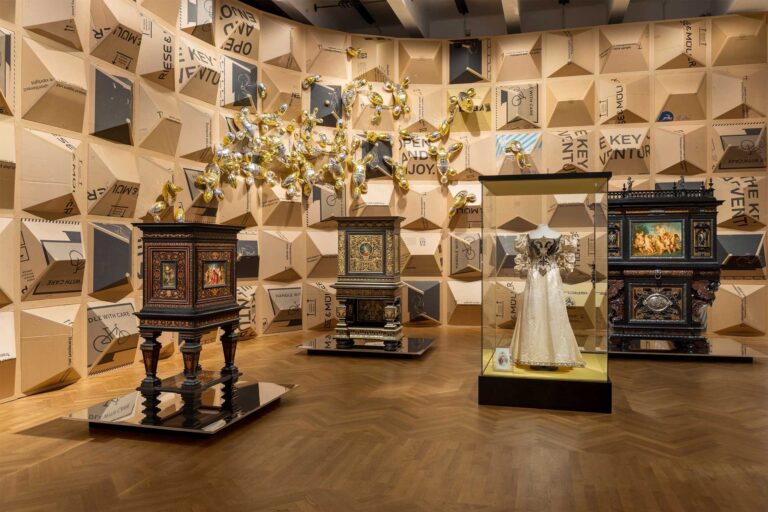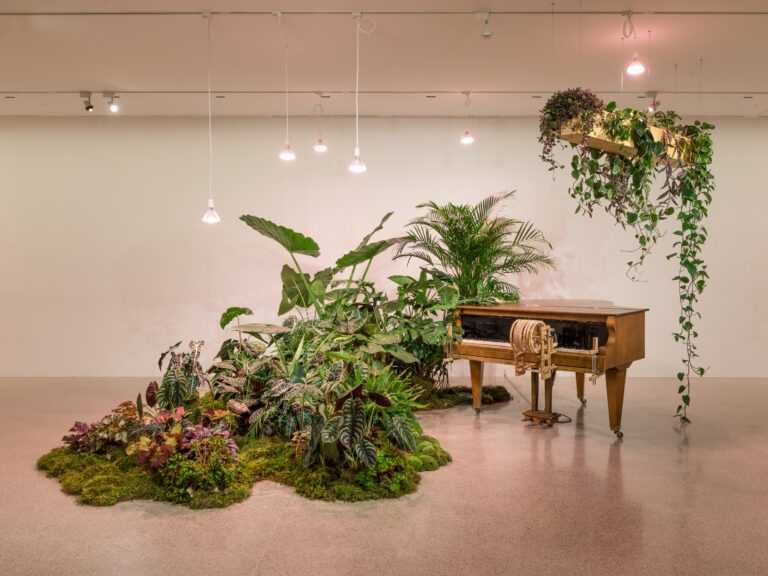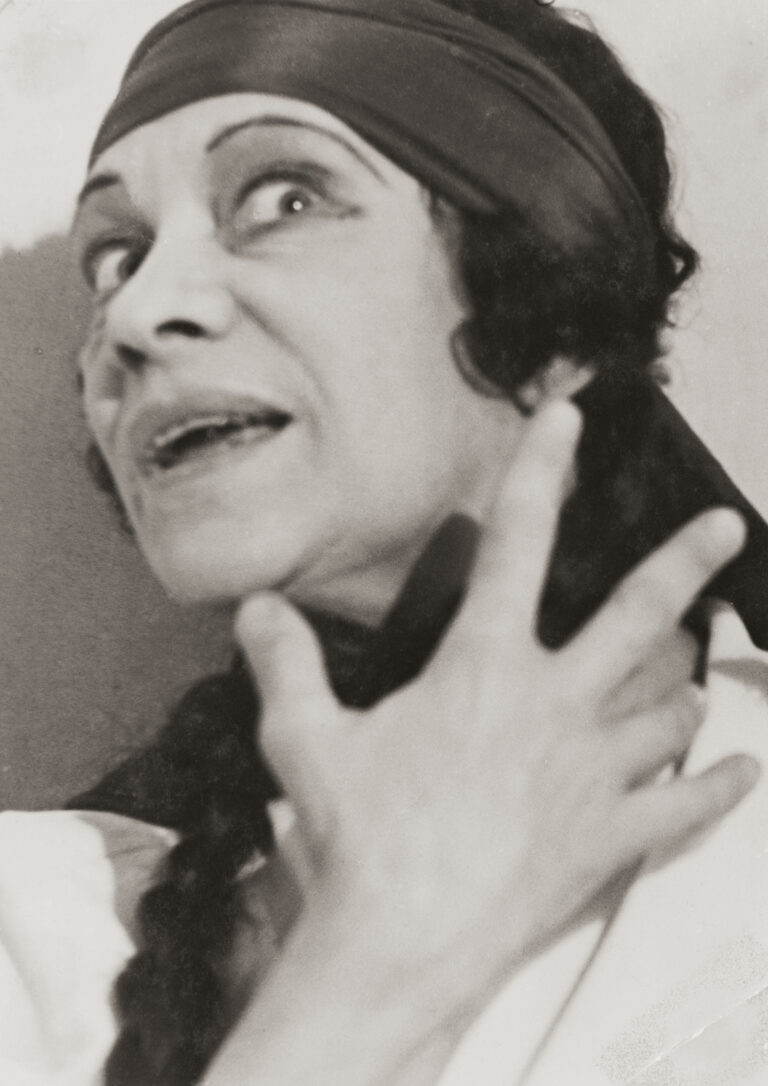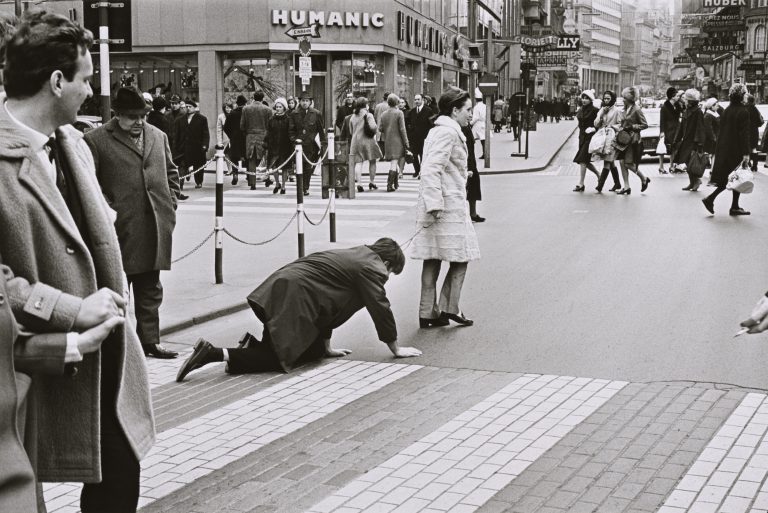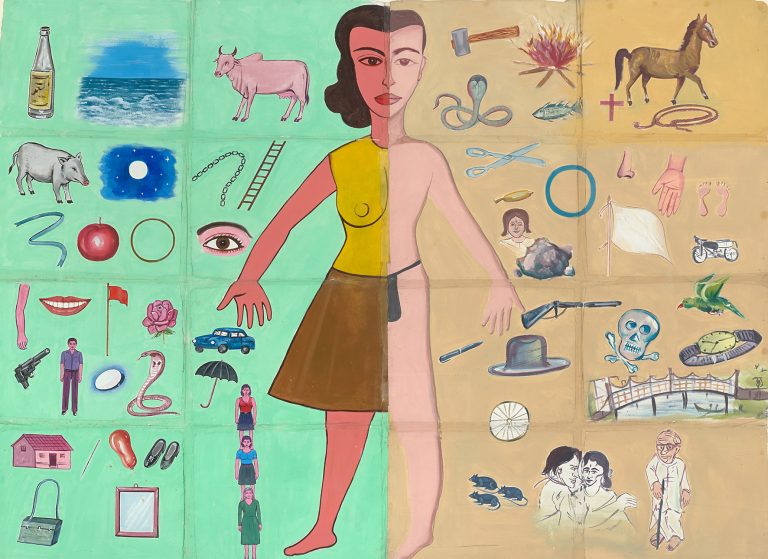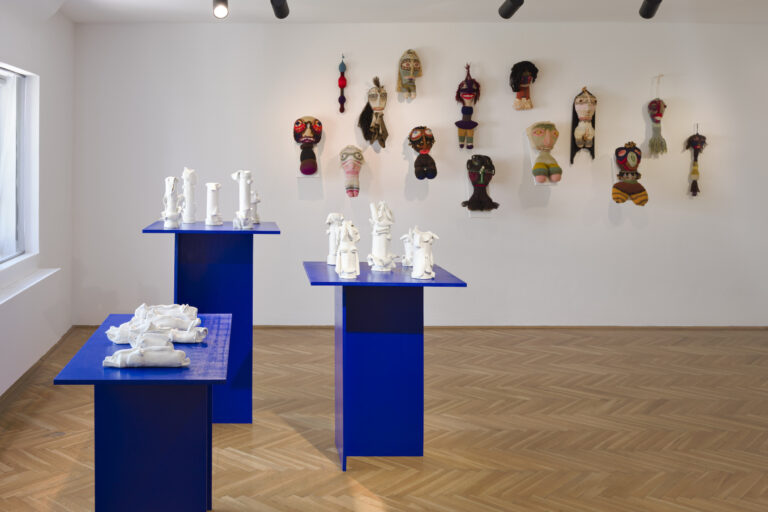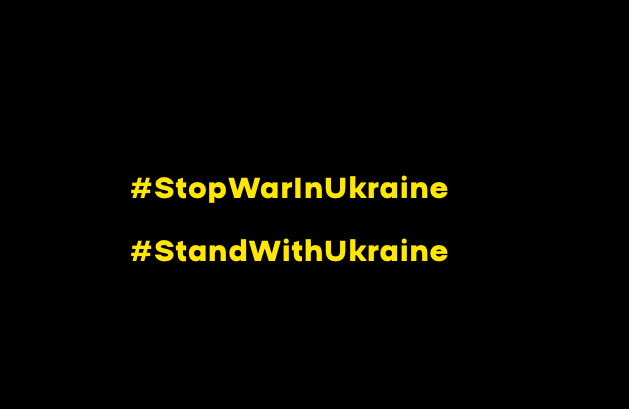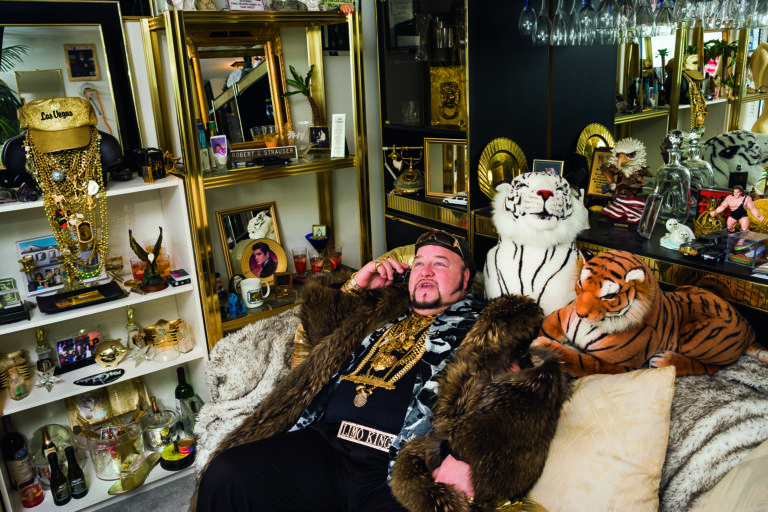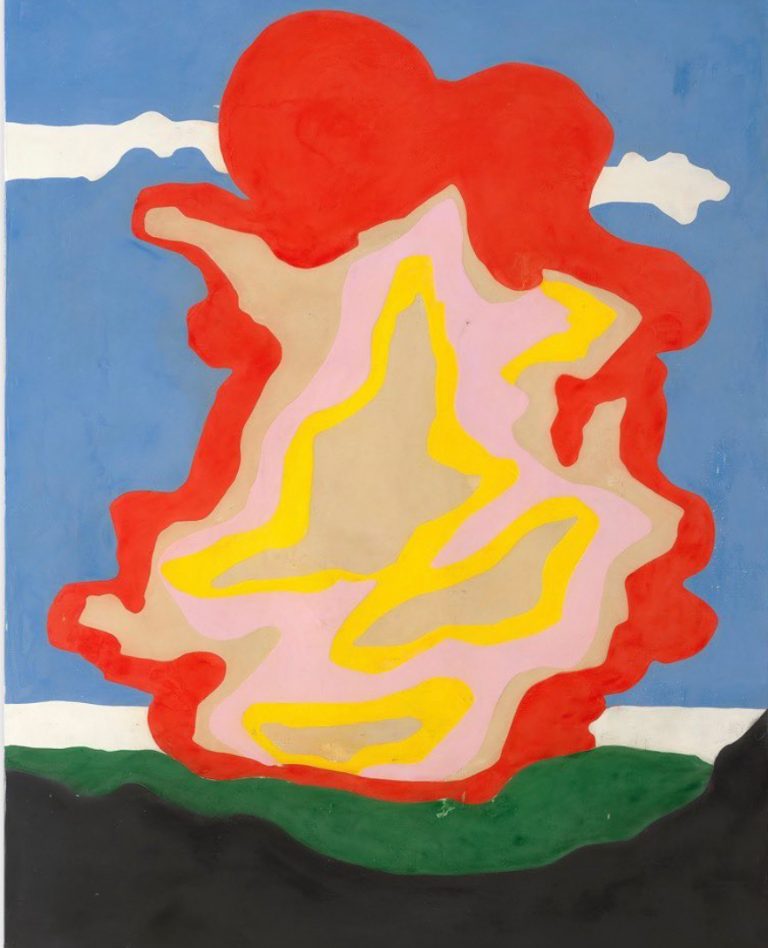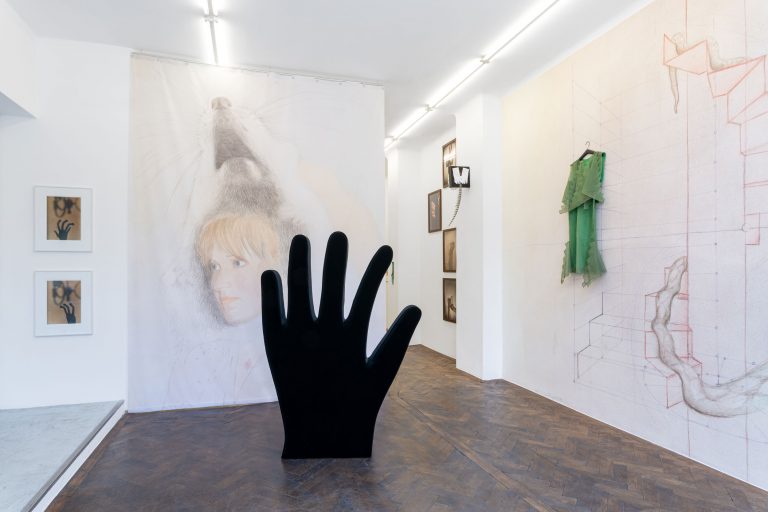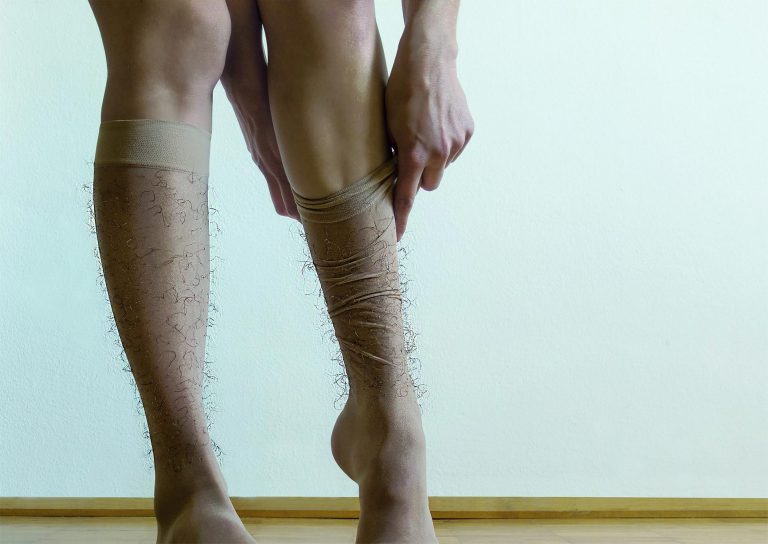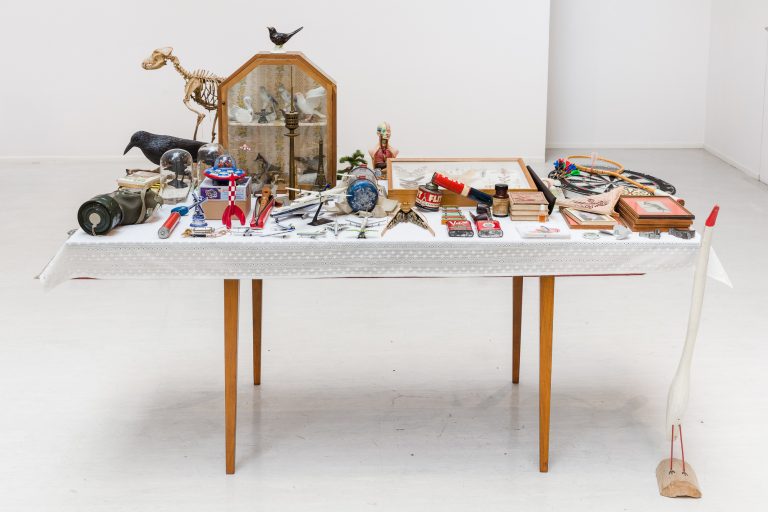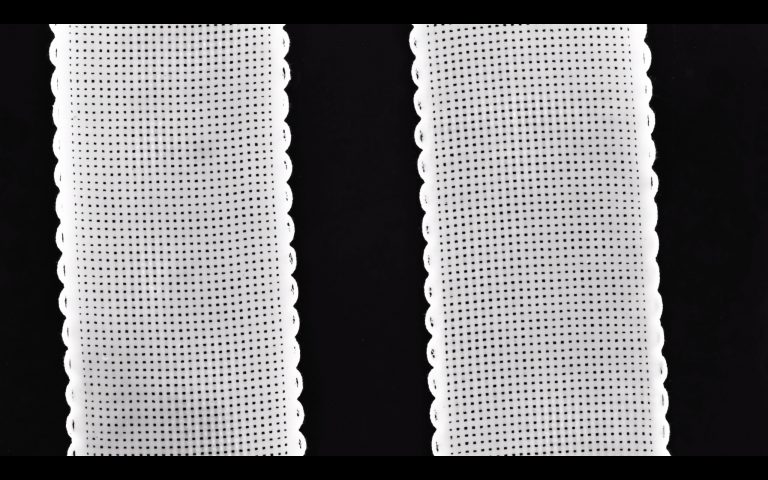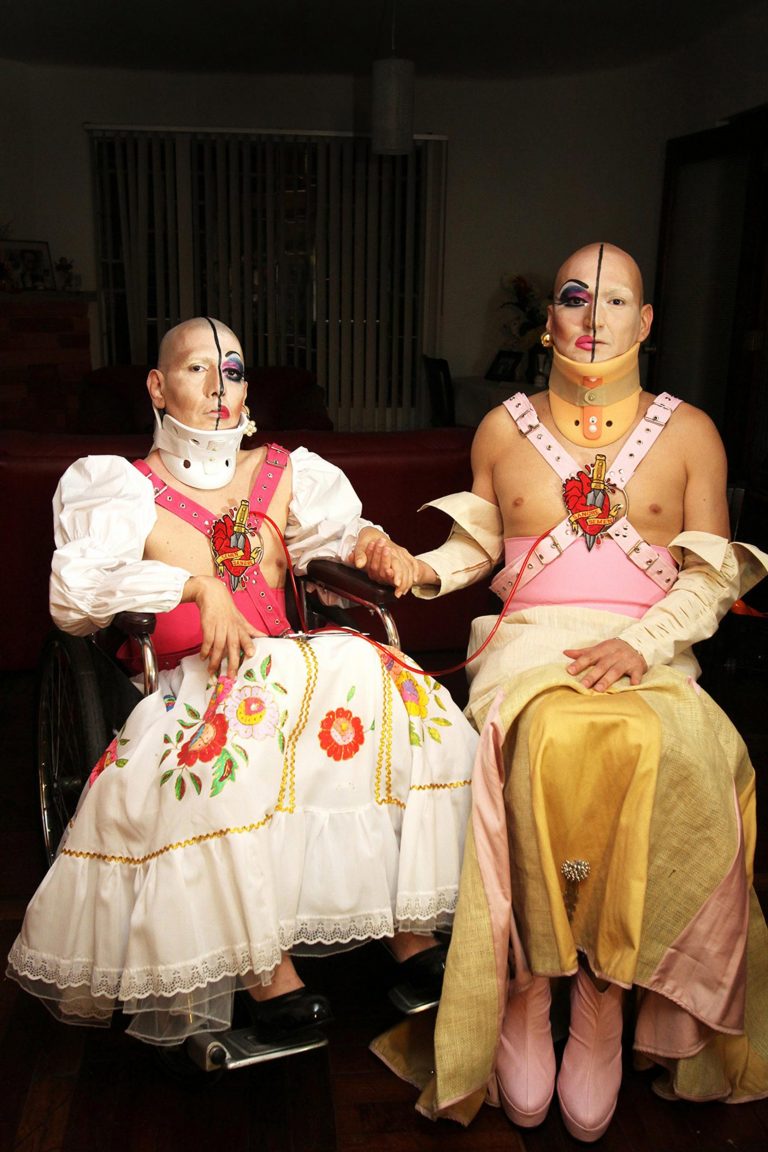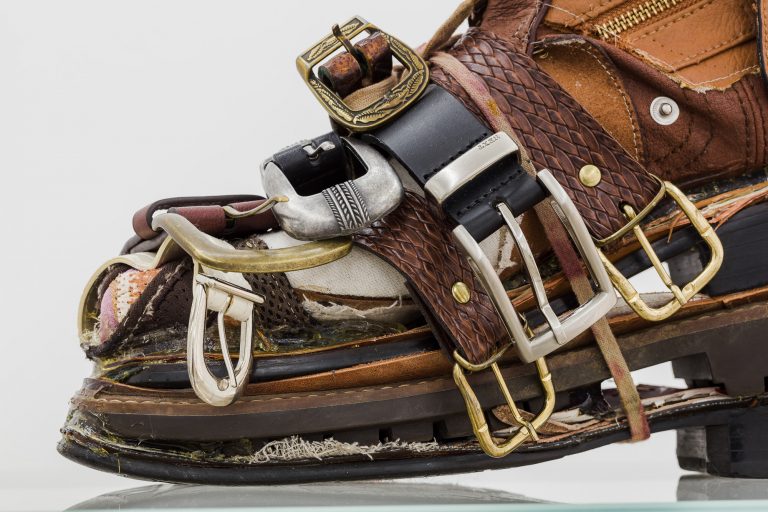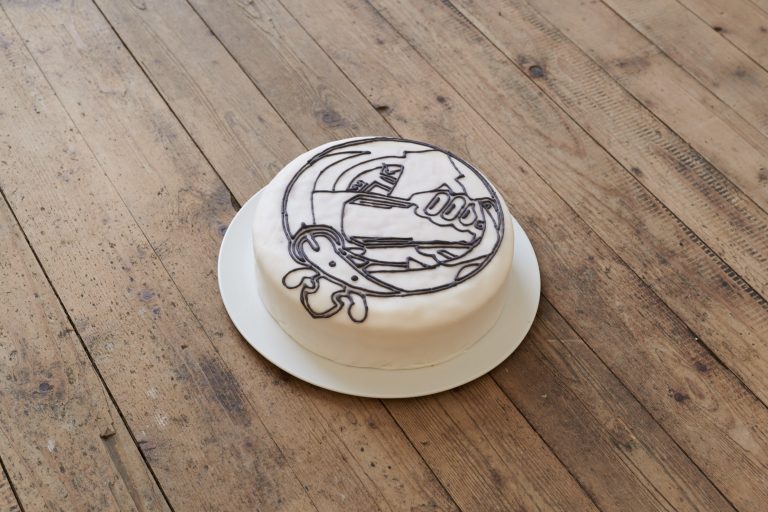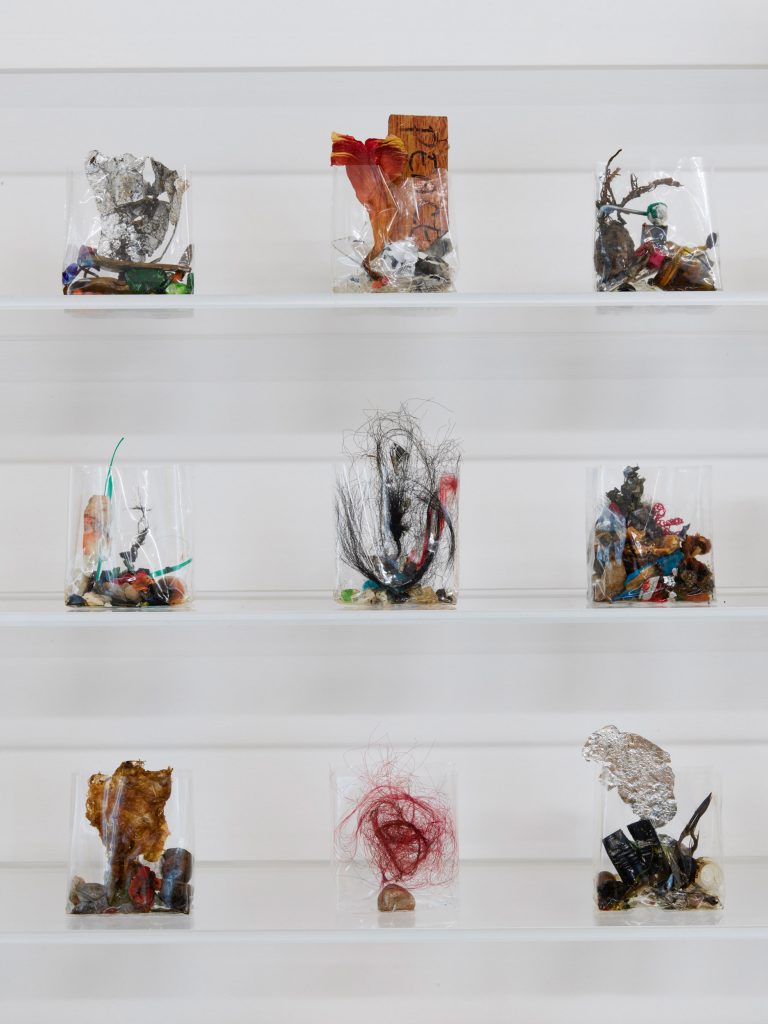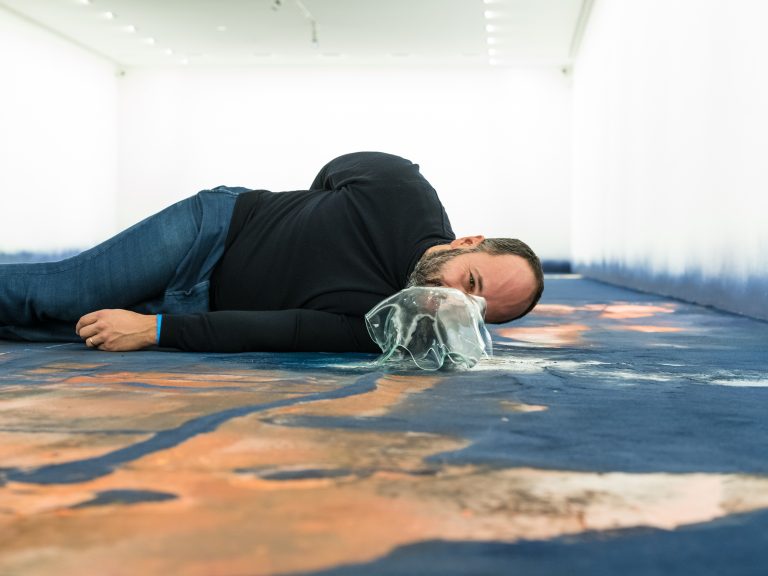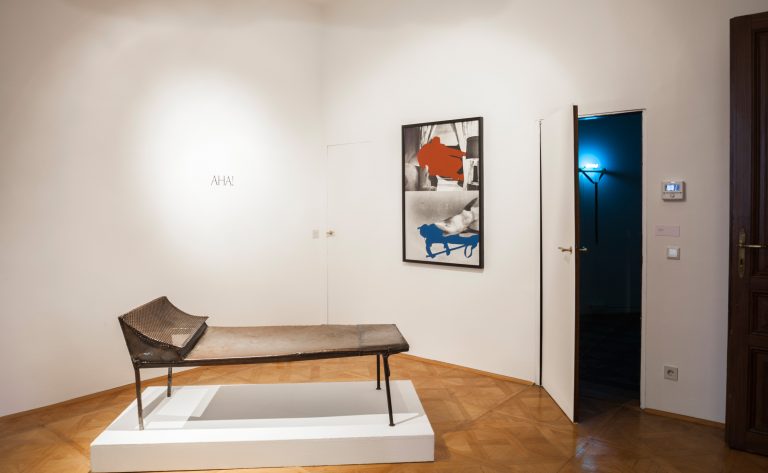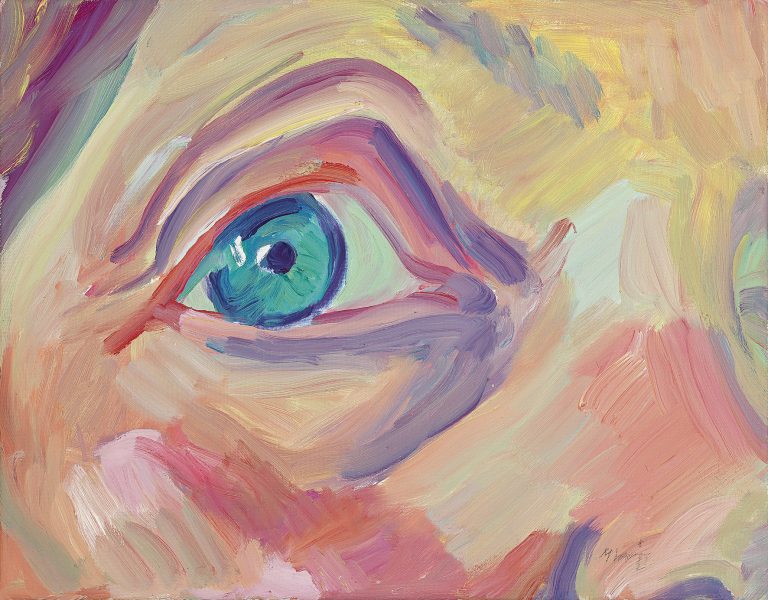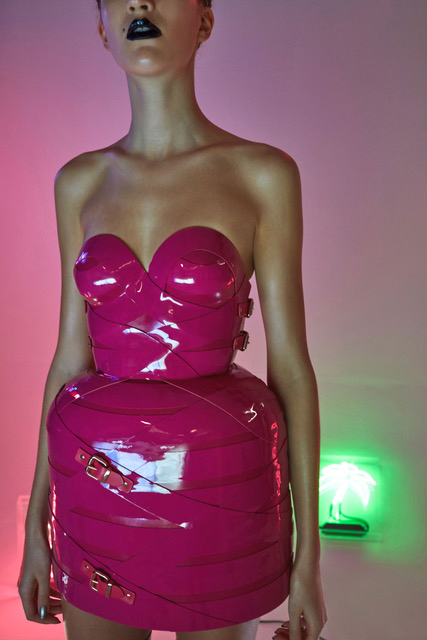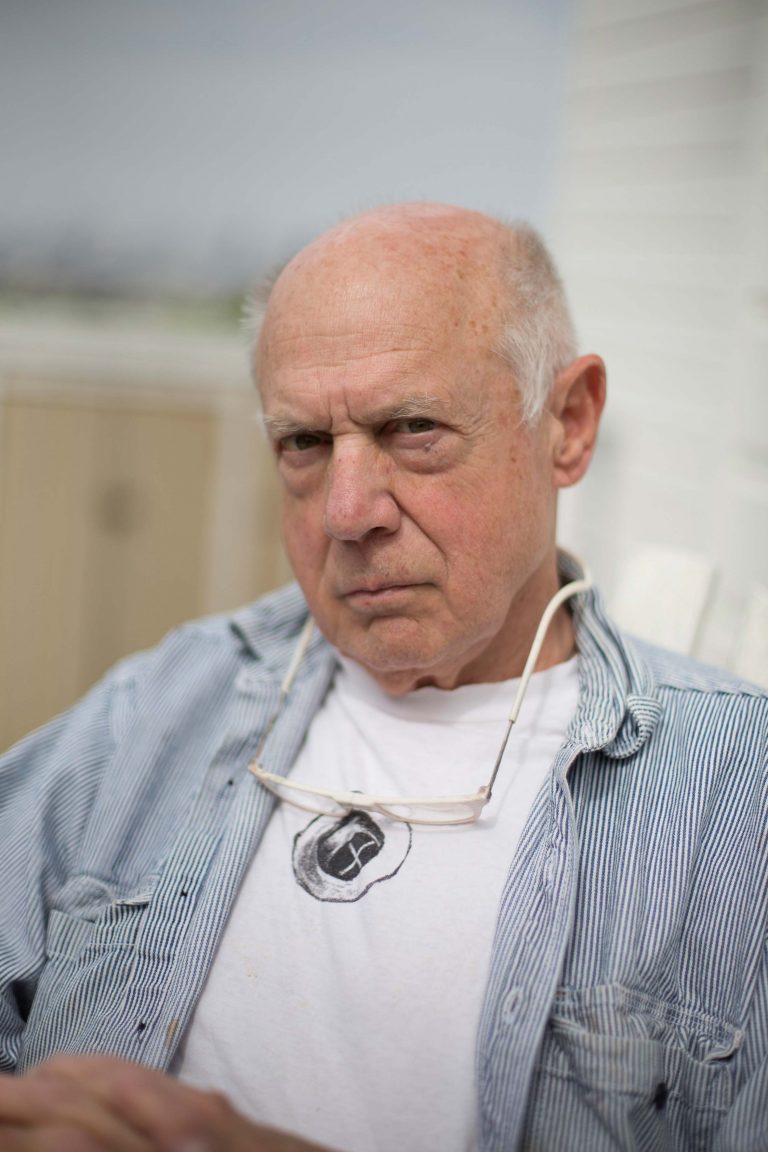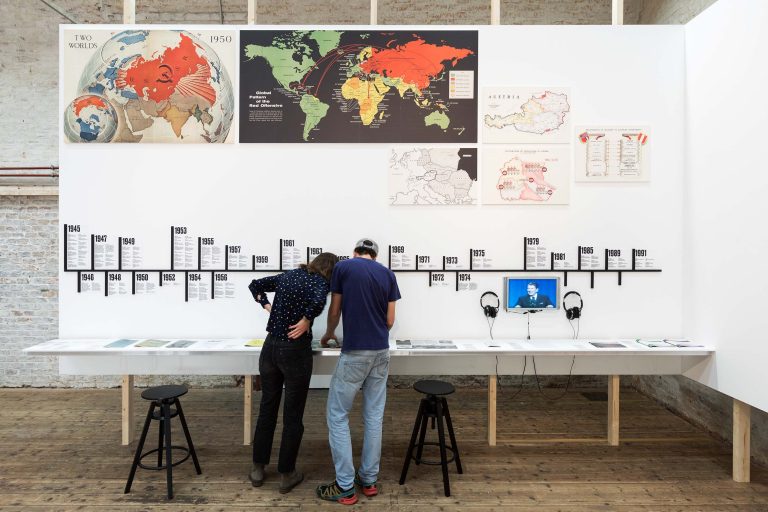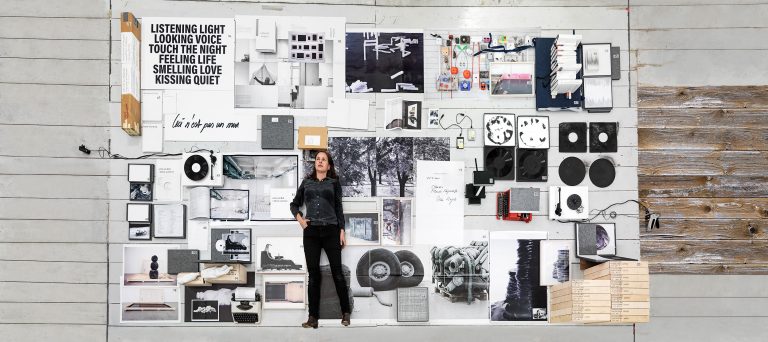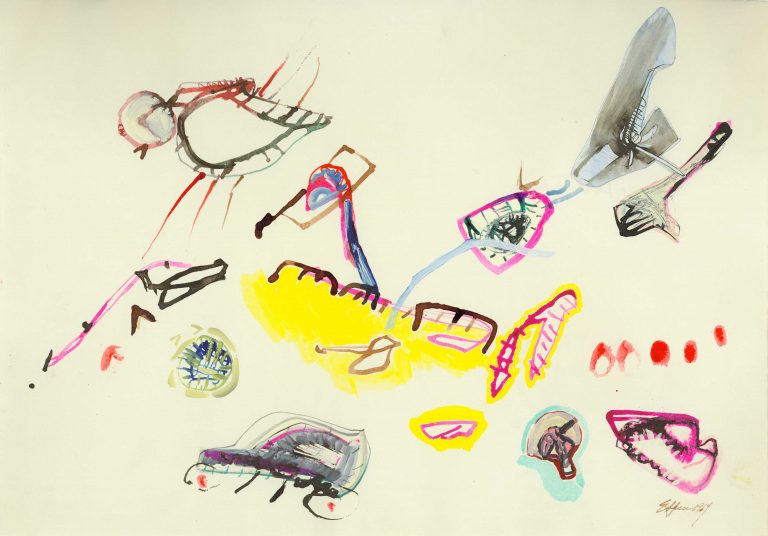In this exhibition series, contemporary artists are invited to examine the portrayal of the Last Judgement by Hieronymus Bosch.
Somewhere between Genius and Lunacy
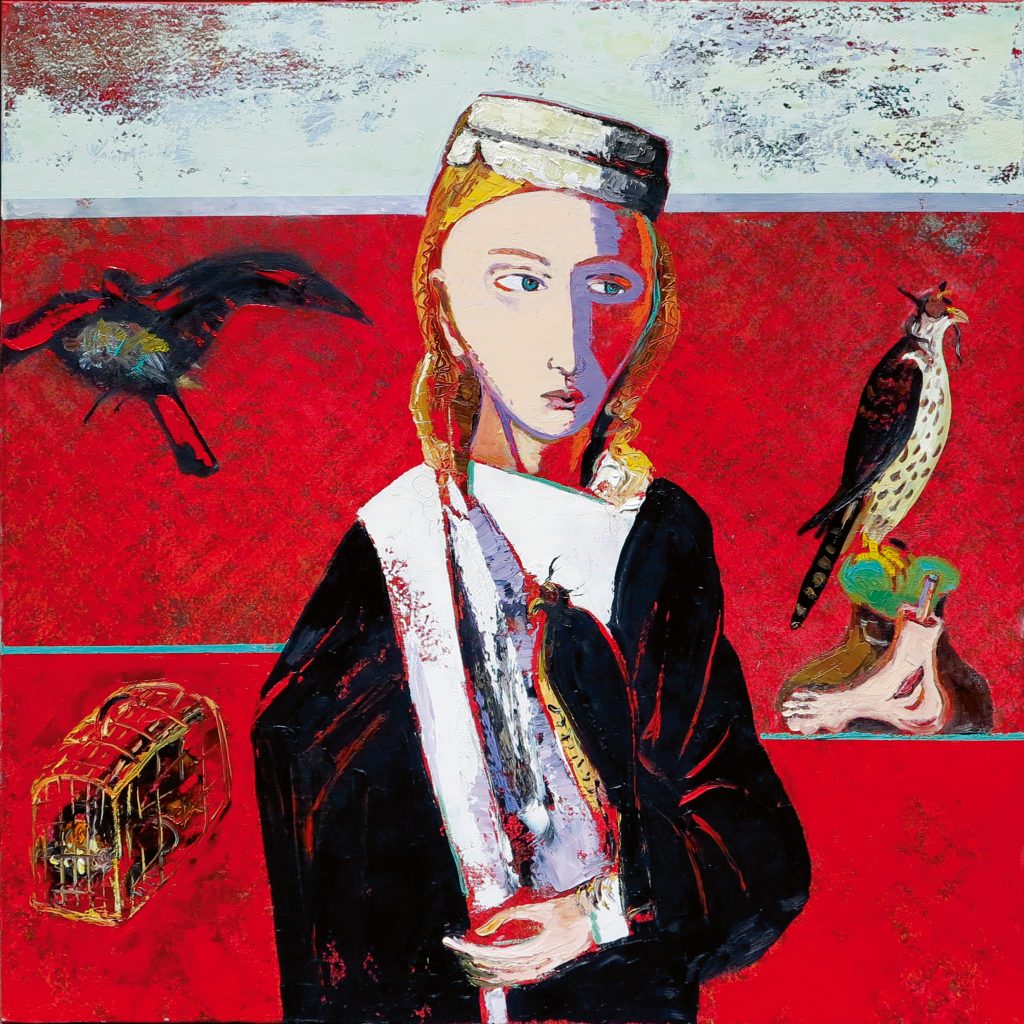
Christine Schlegel: Der Falkner, 2019 Öl auf Leinwand © Christine Schlegel, Foto: Erich Hussmann, Wien
INTERVIEW with artist Christine Schlegel about her exhibition “Korrespondenzen: Bosch & Schlegel – Christine Schlegel: Reservate abtrünniger Engel” in the Gemäldegalerie of the Academy of Fine Arts.
In the exhibition series “Correspondences of the Gemäldegalerie of the Academy of Fine Arts” contemporary artists are invited to examine the portrayal of the Last Judgement by Hieronymus Bosch (c. 1450/55 – 1516) – the heart of the Gemäldegalerie.
In the exhibition “Bosch & Schlegel – Christine Schlegel: Reservations of Renegade Angels”, the German artist Christine Schlegel is showing six paintings which were created as homage to the Dutch painter whom she had admired since her youth. Having grown up in the GDR, Schlegel left the country with the help of a fictitious marriage and went via the Netherlands to West Berlin. Working stays took her to the USA, to Scotland and Umbria as well as to South America. Today the versatile artist lives again in Dresden. In an interview with the VIENNA ART WEEK, Schlegel describes how the pictures in the current exhibition were created.
How does one approach the work of a 15th century painter? Is it a challenge or inspiration to refer to his works?
Christine Schlegel: It was a great inspiration and new discovery, a desire to create new pictures with excitement.
Which content-related or symbolic characteristics of Bosch were important to you in order to convey in your works?
I didn’t have to transport anything in terms of content, because the surreal metaphysical world of Bosch was inherent in my paintings from the very beginning of my artistic work. During my studies I discovered the absurdity of art through the arbitrary creation of collages. Set pieces from photos, pictures, magazines, and real-life images became my inner worlds when reassembled. Similar to collages, I do not proceed in terms of content, but according to the laws of the image. In this way I also approached the Bosch pictures. What caught my eye, what fitted into my picture in terms of colour and composition, was used to rearrange it, to point out similarities. The large picture “Paradise Lost” already existed, the other five pictures I painted in three months.
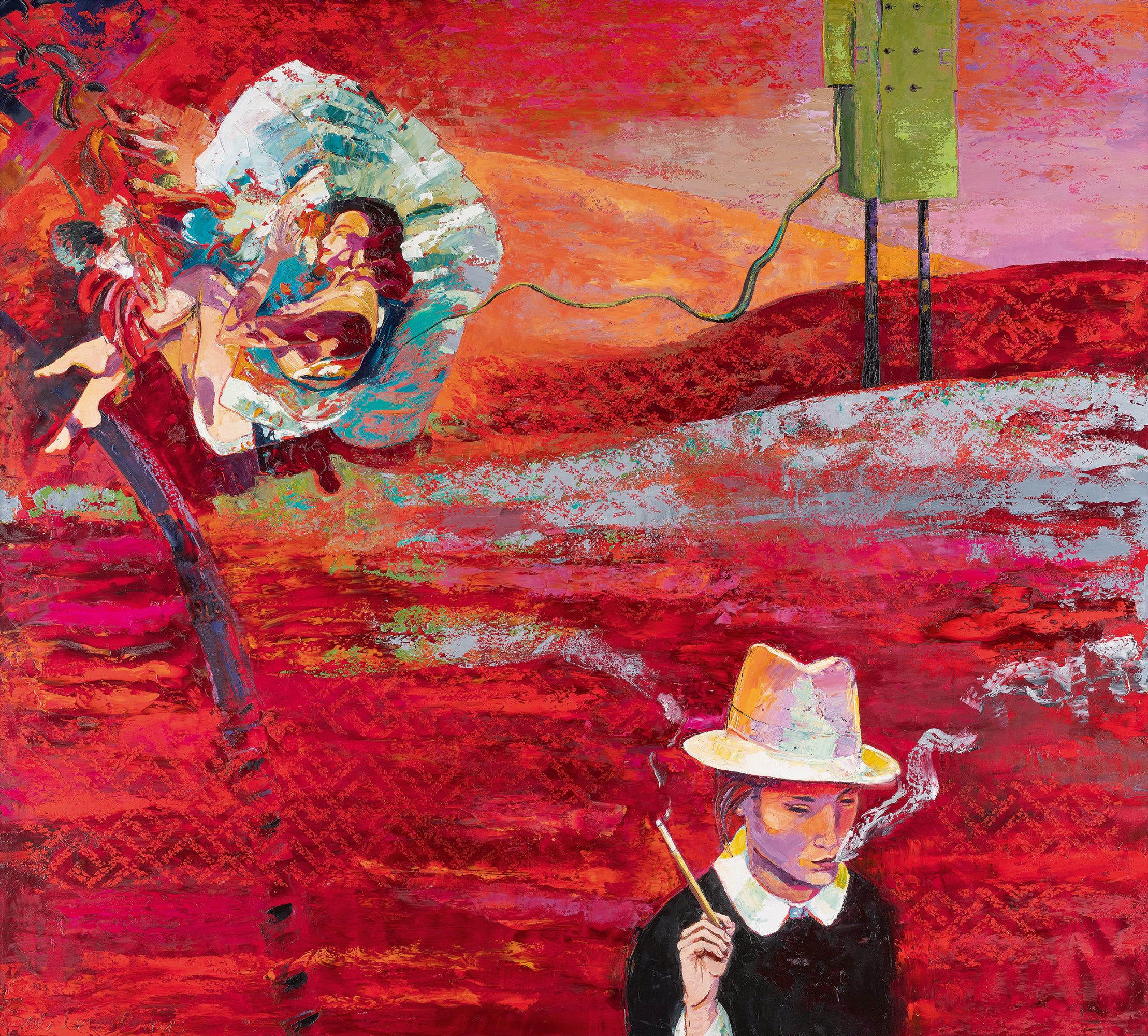
What do you particularly like about Hieronymus Bosch?
Bosch either experienced or perceived the insane – or he was a brilliant creative inventor. Both are remarkable to me. When I was given the large Bosch book as a gift at the age of 18, a restlessness arose in me that I had previously only known from observations and evaluations of fascist atrocities. The question: “What are people capable of?” began to occupy me deeply. Only Biermann’s lyrics: “Whoever does not put himself in danger will die in it” became a redemption.
The socio-critical momentum in Bosch’s works is emphasized again and again. What about your work, for example the revised Stasi files?
The Stasi Acts pictures are very real. The absurdity in them arose because the GDR itself was absurd and antagonistic.
You work with the most diverse media. Why did you decide to use painting for this exhibition at the Gemäldegalerie?
For me, painting is always the first option for processing thoughts and feelings. The 35mm short film “Apocalypso”, many collages or photo overpaintings would have done justice to the correspondence. But it was not meant to be an exhibition of my life’s work, but a bow to Hieronymus Bosch on a 10-meter long wall.
You work with a wide variety of media. Why did you decide to use painting for this exhibition in the Gemäldegalerie?
For me, painting is always the first option for processing thoughts and feelings. The 35mm short film “Apocalypso”, many collages or photo overpaintings would have done justice to the correspondence. But it was not meant to be an exhibition of my life’s work, but a bow to Hieronymus Bosch on a 10-meter long wall.
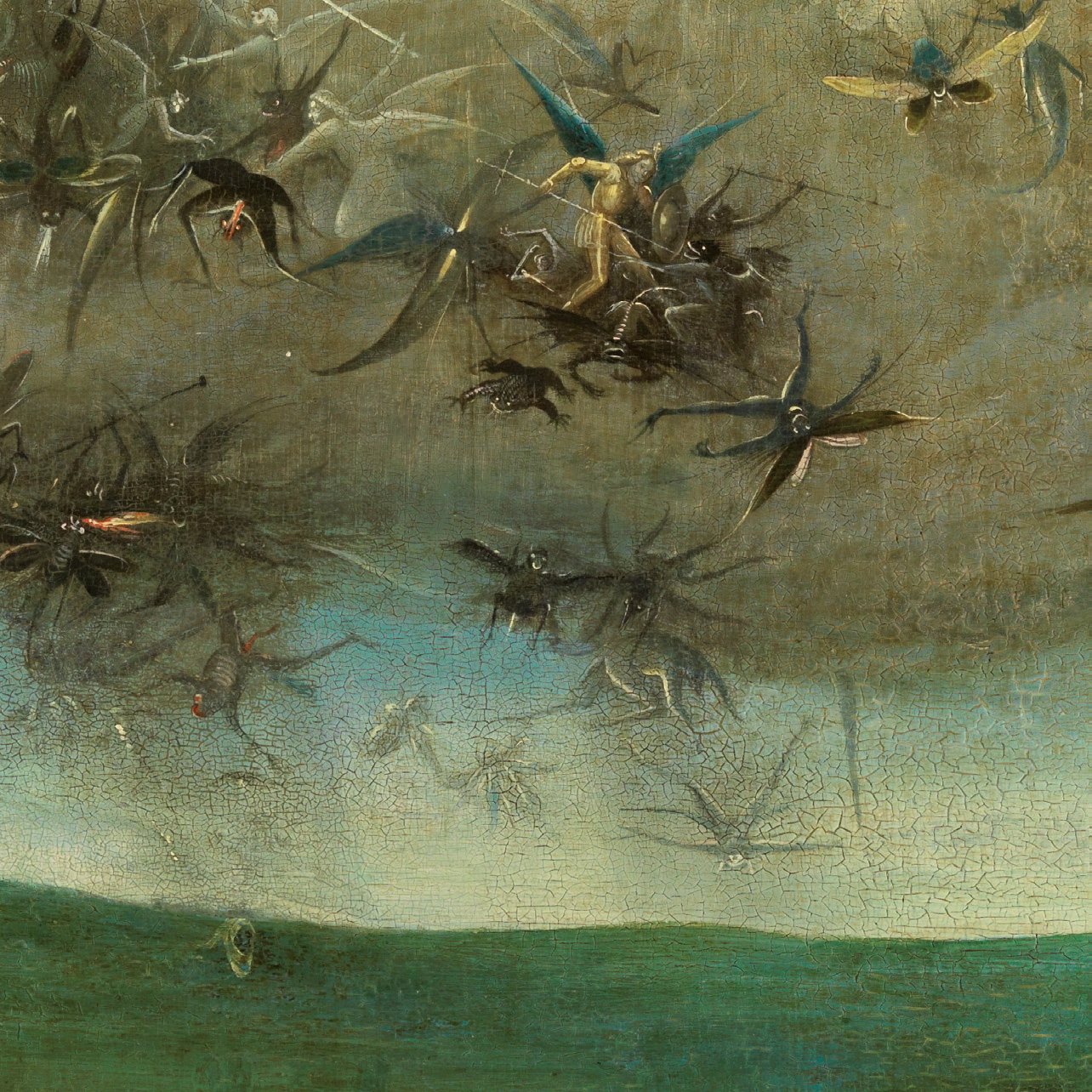
*****
Korrespondenzen
Bosch & Schlegel
Christine Schlegel: Reservate abtrünniger Engel
Gemäldegalerie der Akademie der bildenden Künste Wien
Lobkowitzplatz 2, 1010 Vienna
Opening: 11 March 2020, 7:00 pm
Press Guided Tour: 10 March 2020, 11:00 am
Exhibition: 12 March till 24 May 2020
